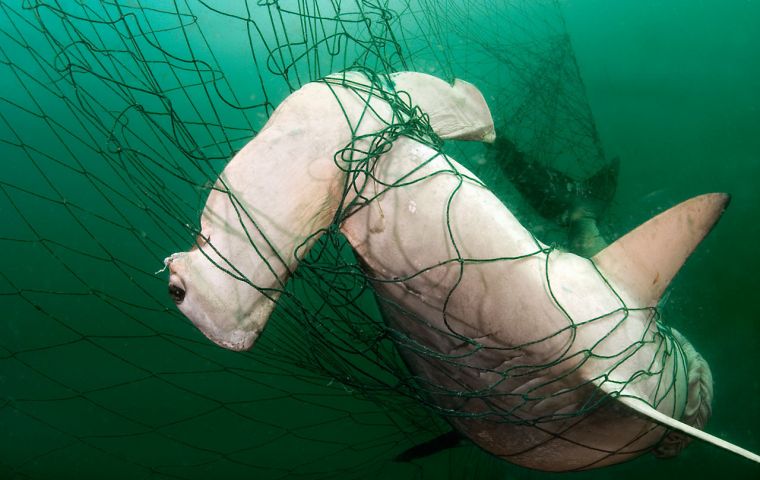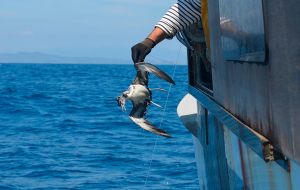MercoPress. South Atlantic News Agency
Commercial fishing by-catch exposure controversy in New Zealand
 The fisheries don't deny there is by-catch and endangered animals do fall victim, but what should happen to the footage from these cameras has generated a debate
The fisheries don't deny there is by-catch and endangered animals do fall victim, but what should happen to the footage from these cameras has generated a debate  For conservationists it is an attempt to hide the impact of commercial fishing on endangered species
For conservationists it is an attempt to hide the impact of commercial fishing on endangered species New Zealand's fishing industry has found itself at odds with conservationists over whether or not the public should be allowed to see the realities of commercial fishing. In the waters around New Zealand - as many countries - animals including sea birds, dolphins, penguins and sea lions are routinely ending up in commercial fishing nets along with the intended catch.
In an attempt to better measure the impact of this “by-catch” on endangered wildlife, the government has started tighter monitoring, and as part of that, is proposing putting security cameras on boats.
The fisheries do not deny there is by-catch and that endangered animals do fall victim. But what should happen to the footage from these cameras has generated a debate. The industry says it should be withheld from the public, fearing it might be misunderstood, or misused as propaganda.
But this, say conservationists, is an attempt to hide the impact of commercial fishing on endangered species. They say the public should know if the likes of the small New Zealand native Hector's dolphin are falling victim to the fisheries.
Under existing rules, fishing vessels only occasionally have observers onboard to log and report the cases. On all other vessels, the fishing company itself is responsible for logging the by-catch.
While accidentally catching endangered species has no legal consequences, not reporting the by-catch incurs a fine, as authorities want to monitor the environmental impact of commercial fishing. They might also ban fishing for a while in areas where, for example, a sea lion has been killed.
Kevin Hague, chief executive of conservationist group Forest & Bird, says that last year “there were 14 penguins that were reported as having been killed in the inshore set net industry”.
“Now, 13 of those birds were killed on boats that had observers from the Ministry of Primary Industries and only one occurred in the 97% of the fishing fleet that didn't have observers. That really strongly suggests that the fishing industry is covering up literally hundreds of deaths of penguins,” he alleges.
Under the government-planned Integrated Electronic Monitoring and Reporting System (IEMRS), every vessel will eventually be equipped with monitoring cameras to verify bycatch rates.
The public could then request access to the footage gathered under the Official Information Act (OIA). But earlier this week, a letter written last year by fishing industry representatives to the government emerged.
While insisting the industry was supportive of stepping up recording and reporting systems, it raised concerns about privacy, and warned the material, if made public, “could be reduced down to a collection of stark instances to create a distorted and misleading picture of the seafood industry”.
“The risks to the seafood industry and to New Zealand's international reputation as a reputable source of quality, sustainably produced seafood could be significantly impaired,” the letter says.
It urged the government to change legislation to exempt the monitoring footage from the OIA The letter was obtained and released by Forest & Bird, which saw it as an attempt to cover up the true scale of the by-catch problem.
It released a cache of images of dead dolphins, sea lions and other by-kill, with Mr. Hague saying: “These are the images the fishing industry doesn't want you to see.”




Top Comments
Disclaimer & comment rules-

Read all commentsI don't see how this can be though to be some sort of secret. Anyone who bothers to think can see that fishing with a net is not selective, and that whatever creatures are in the area are going to be taken along with the intended catch. If there is to be commercial fishing, there will be many unintended animals taken -- there's no way to avoid it.
Jan 25th, 2018 - 04:19 pm 0Commenting for this story is now closed.
If you have a Facebook account, become a fan and comment on our Facebook Page!